Looking at your spice rack right now, you probably have one type of pepper - but did you know there are five distinct peppercorn varieties that can transform your cooking? This guide explains exactly what each type is, how they differ in flavor, and when to use them for perfect seasoning in everyday cooking. Skip the scientific jargon and get practical answers to your most pressing peppercorn questions.
Table of Contents
- Black Peppercorn: Your Everyday Essential
- White Peppercorn: The Secret Ingredient
- Green Peppercorn: Fresh & Bright
- Red Peppercorn: Rare & Fruity
- Pink Peppercorn: Floral & Sweet
- When to Use Each Type: Quick Reference
- What to Look For When Buying
- Surprising Facts You Didn't Know
- Frequently Asked Questions
Black Peppercorn: Your Everyday Essential
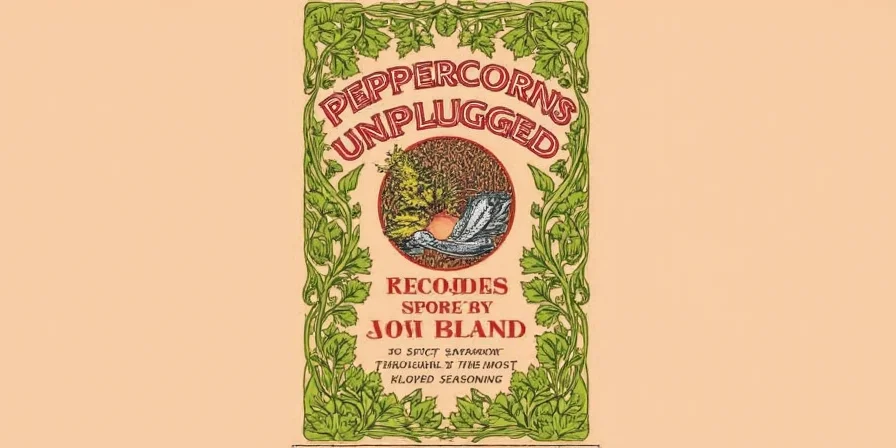
Black peppercorns are what you already have in your shaker - the most common and versatile variety. They're unripe berries that turn dark when dried, offering that familiar sharp, piney heat we associate with 'pepper.'
- What it is: Unripe berries sun-dried until wrinkled and dark
- Flavor: Sharp, piney, with noticeable heat (the standard 'pepper' taste)
- Best for: Almost everything - meats, roasted vegetables, soups, and general seasoning
- Pro tip: Buy whole and grind fresh for maximum flavor; pre-ground loses potency quickly
White Peppercorn: The Secret Ingredient
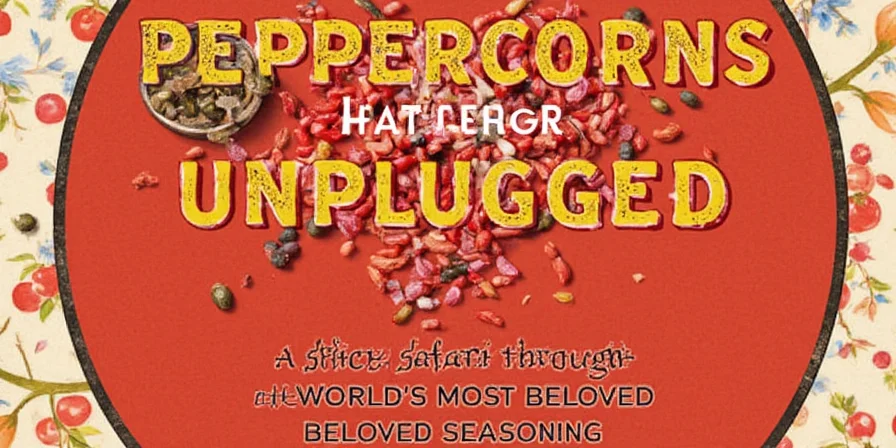
White pepper isn't a different plant - it's the same berry with the outer layer removed. It has a cleaner appearance and more subtle heat, making it perfect when you don't want black specks in your dish.
- What it is: Ripe berries with outer layer removed through soaking
- Flavor: Earthy, musty, with less sharp heat than black pepper
- Best for: Cream sauces, light-colored soups, potato dishes, and Asian cuisine
- Pro tip: Use in mashed potatoes or alfredo sauce where black specks would show
Green Peppercorn: Fresh & Bright
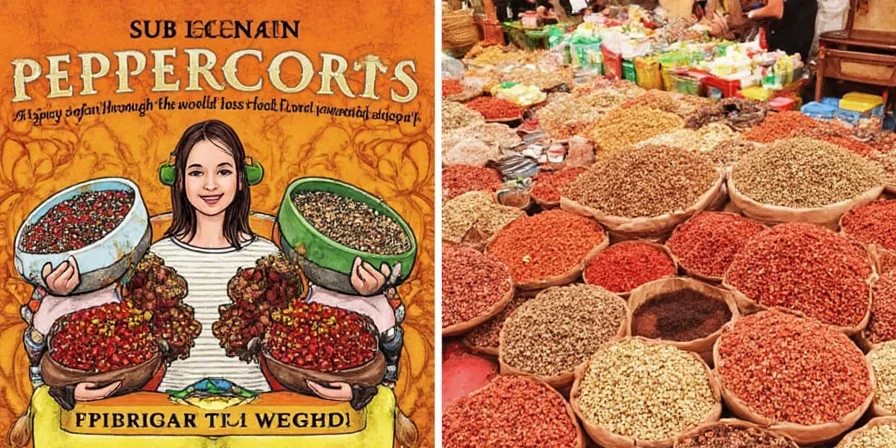
Green peppercorns are the freshest form, either brined or freeze-dried. They offer a brighter, more citrusy flavor compared to their dried counterparts.
- What it is: Unripe berries preserved in brine or freeze-dried
- Flavor: Mild, fresh, with citrus notes and less heat
- Best for: Fish, chicken, salad dressings, and dishes where you want pepper flavor without strong heat
- Pro tip: Add toward the end of cooking to preserve freshness; great in tuna salad
Red Peppercorn: Rare & Fruity
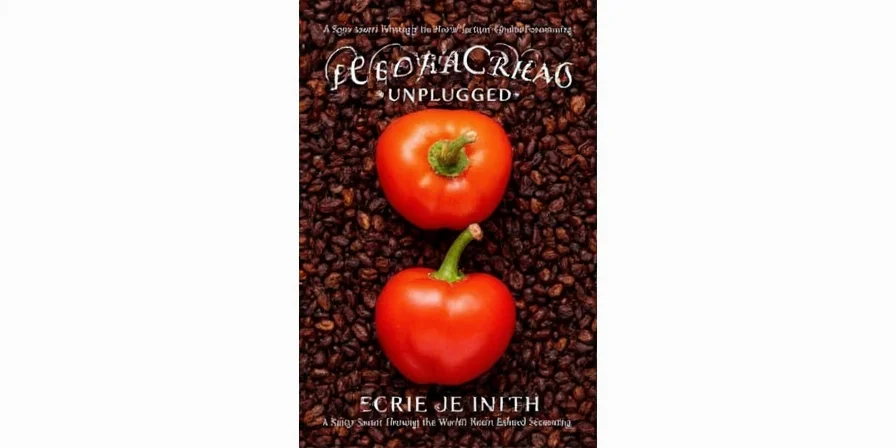
Red peppercorns are fully ripe berries that are quite rare in Western cooking. They're much more delicate and have subtle fruit flavors you won't find in other varieties.
- What it is: Fully ripe berries (same plant as black pepper)
- Flavor: Mild heat with berry-like sweetness and subtle fruit notes
- Best for: Fruit salads, desserts, vinaigrettes, and dishes where you want subtle pepper flavor with fruit notes
- Pro tip: Use sparingly in chocolate desserts or berry sauces for unexpected complexity
Pink Peppercorn: Floral & Sweet

Despite the name, pink peppercorns aren't true pepper but come from a different plant. They offer floral notes with minimal heat, making them perfect for finishing dishes.
- What it is: Berries from the Peruvian pepper tree (not Piper nigrum)
- Flavor: Floral, slightly sweet, with very mild heat
- Best for: Fruit dishes, salads, and as a finishing touch on savory dishes
- Pro tip: Crush lightly and sprinkle on watermelon or grilled peaches for a flavor boost
When to Use Each Type: Quick Reference
Confused about which pepper to reach for? This simple guide tells you exactly when to use each type for perfect results every time.
| Type | Use When... | Avoid When... |
|---|---|---|
| Black | You want classic pepper flavor in most savory dishes | Making light-colored sauces or dishes where specks show |
| White | You need pepper flavor without black specks showing | Strong pepper flavor is the main goal |
| Green | You want fresh pepper flavor with mild heat | Long cooking times (flavor fades) |
| Red | You want subtle fruit notes with mild pepper flavor | Strong pepper flavor is needed |
| Pink | Adding floral notes to desserts or fresh dishes | Need significant heat or traditional pepper flavor |
What to Look For When Buying
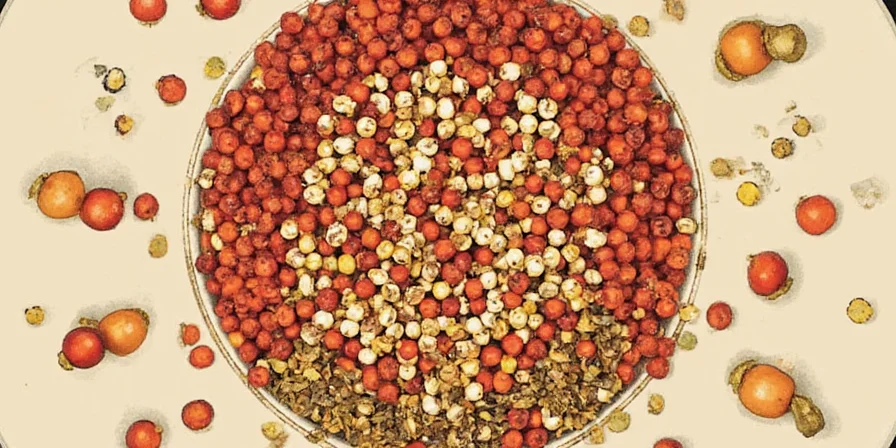
Don't waste money on stale pepper! Here's what actually matters when purchasing peppercorns:
- For freshness: Buy whole peppercorns and grind as needed (pre-ground loses 50% flavor within 15 minutes)
- Storage: Keep in airtight container away from light and heat (never near coffee, which it absorbs)
- Quality check: Fresh peppercorns sink in water; stale ones float
- Value: You don't need expensive single-origin - good quality Tellicherry works for most home cooking
- Avoid: 'Red peppercorns' that look too uniform (likely dyed)
Surprising Facts You Didn't Know
These unexpected peppercorn facts will change how you think about this everyday spice:
- All black, white, and green peppercorns come from the same plant at different ripeness stages
- True red peppercorns are rare because they spoil quickly after ripening
- Pink peppercorns can cause allergic reactions in people sensitive to cashews
- Peppercorns were once used as currency - 1 pound equaled 1 pound of silver in Viking times
- White pepper isn't milder because it's white - the heat compounds are actually different
Frequently Asked Questions
What's the difference between black and white pepper?
Black pepper is made from unripe berries that are dried with their outer layer intact, giving it that classic sharp flavor. White pepper is the same berry with the outer layer removed, resulting in a more earthy, musty flavor with less sharp heat. Use black pepper when you want visible specks and stronger flavor, white pepper when you need a cleaner appearance.
Can I substitute white pepper for black pepper?
Yes, but the flavor will be different. White pepper has earthier, less sharp notes than black pepper. Substitute 3/4 teaspoon white pepper for 1 teaspoon black pepper. It works well in cream sauces, light soups, and potato dishes where you don't want black specks showing.
Which pepper is the hottest?
Black pepper typically has the most noticeable heat, followed by green, then white. Red and pink peppercorns have much milder heat. However, 'hottest' depends on your recipe - black pepper's heat stands out more in most dishes, while white pepper's heat blends in more subtly.
Do I really need to buy different peppercorns?
For most home cooking, black pepper is sufficient. But having white pepper on hand makes a difference in light-colored dishes, and green peppercorns add freshness to certain recipes. Start with black and white, then add others as you find specific uses for them.
Why does my pepper grinder get clogged?
Moisture is the main culprit. Whole peppercorns contain some moisture that can cause clumping. Store peppercorns in a dry place, and if your grinder clogs, run it under hot water and let it dry completely before refilling. Using a burr grinder instead of blade grinder also helps prevent clogging.
Conclusion
You don't need to be a professional chef to use peppercorns effectively. By understanding these five basic varieties and when to use each one, you'll immediately improve your seasoning skills. Start with black pepper for everyday use, add white pepper for light-colored dishes, and experiment with green, red, or pink varieties as you discover recipes that benefit from their unique flavors. Remember: fresh, whole peppercorns properly stored will always outperform pre-ground versions. The perfect seasoning isn't about using more pepper—it's about using the right pepper at the right time.

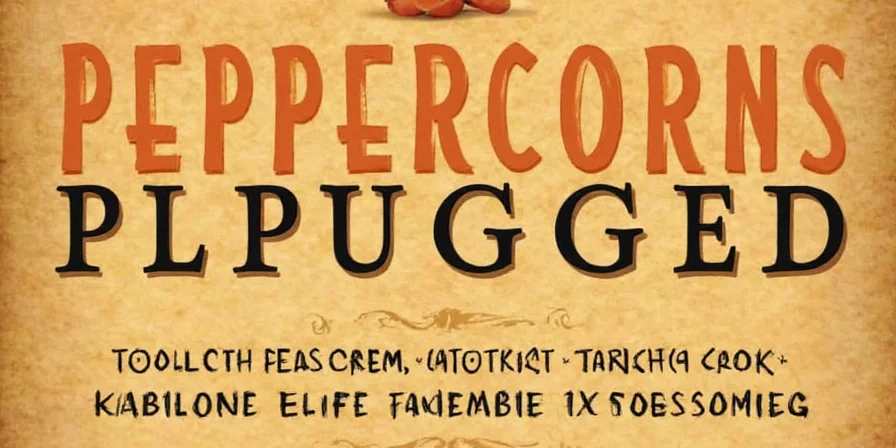









 浙公网安备
33010002000092号
浙公网安备
33010002000092号 浙B2-20120091-4
浙B2-20120091-4